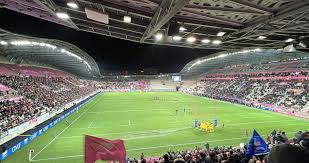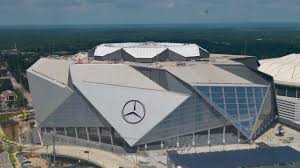Stade Jean Bouin: Home to Parisian Sports Excellence

Introduction
Stade Jean Bouin, located in the heart of Paris, is one of the city’s premier sports venues. Opened in 2013, this modern stadium has not only transformed the landscape of French sports but also stood as a testament to the evolution of athletic facilities. With a capacity of 20,000, it primarily serves as the home ground for Stade Français, the famous rugby union club. The relevance of Stade Jean Bouin in today’s sporting culture cannot be understated, as it embodies the spirit of French rugby and has become a focal point for various sporting events and community activities.
Historical Background
The original Stade Jean Bouin was established in the early 20th century, but it was gradually replaced due to advances in sporting requirements and urban development. The current structure was inaugurated in 2013 and integrated state-of-the-art amenities, including advanced seating, hospitality suites, and a modern playing surface. Designed by the renowned architect, Rudy Ricciotti, the venue is also lauded for its innovative design, featuring a striking, undulating roof that contributes to its aesthetic appeal and acoustic performance.
Recent Events and Activities
In the past year, Stade Jean Bouin has played host to a plethora of sporting events, not just limited to rugby. Concerts, athletics, and even community events have taken place within its walls, making it a versatile venue. The stadium gained attention during the 2023 rugby season as Stade Français competed fiercely in Top 14, keeping fans on the edge of their seats. Additionally, recent initiatives have aimed at enhancing fan engagement through interactive experiences and educational programs for younger audiences, further solidifying its position within the sports community.
Significance for the Future
The ongoing importance of Stade Jean Bouin is underscored by its commitment to sustainability and community involvement. Plans are in place to improve public transport access to the venue, aligning with Paris’ environmental goals. The stadium also aims to host more international events in the coming years, potentially elevating Paris’s status in the global sporting arena. As the sports environment continues to shift, Stade Jean Bouin is well-positioned to adapt to new trends, embrace technological advancements, and provide future generations with a world-class facility.
Conclusion
Stade Jean Bouin stands as a symbol of Parisian athleticism and community spirit. Its modern architecture, coupled with its rich sporting tradition, makes it much more than just a stadium; it is a cultural landmark. As it continues to host major events and engage with the community, Stade Jean Bouin’s relevance in the sporting world will undoubtedly grow, contributing to the vibrant fabric of Parisian life.



